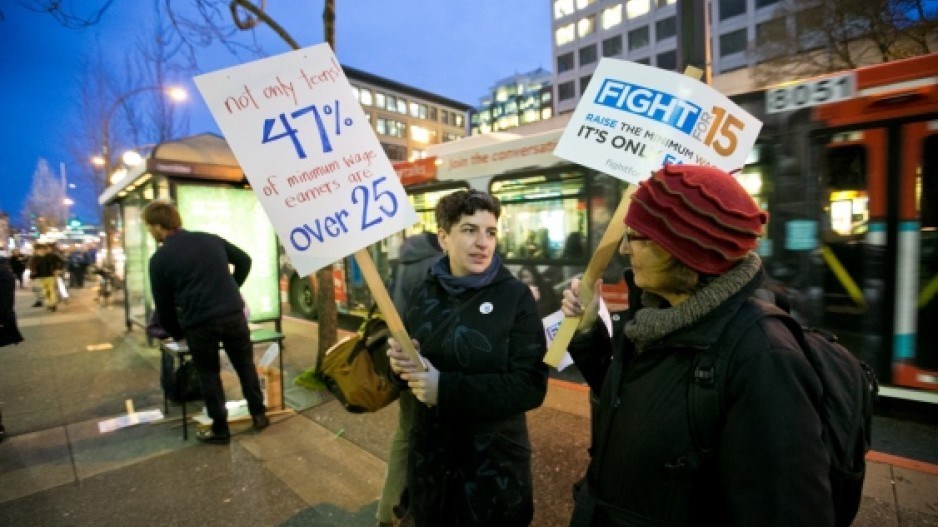It’s been three years since B.C. began raising its minimum wage after keeping it the same for a decade, and debate continues over the impact the series of increases has had on the job market.
While it’s difficult to quantify precisely the economic impact of any piece of legislation, the changes that have occurred in the province’s labour market during the series of minimum-wage increases might be surprising to critics.
For example, youth unemployment hit an all-time low of 6 per cent in August 2016, a year after the first increase.
The composition of people earning the minimum wage is also changing.
Youth aged 15 to 24 now make up a smaller percentage of minimum-wage earners than they did in 2017, according to a Statistics Canada report. In 2017’s first quarter, youth made up 52 per cent of minimum-wage earners compared with 43 per cent this year. The percentage of people aged 35 to 64 being paid minimum wage rose to 31 per cent from 25 per cent during the same period.
On June 1, B.C. embarked on a four-year trek towards a $15.20 per hour minimum wage with an 11.5 per cent increase: to $12.65 from $11.35.
Two months of labour data is not enough to judge the economic effects of what was the largest minimum-wage hike since the 1980s. However, since the most recent rate increase came into effect, B.C. employment has risen 0.13 per cent and its unemployment rate has increased to 5 per cent from 4.8 per cent.
The unemployment rate increase can be attributed in part to more than twice the number of people entering the labour force than the number of jobs created. However, youth unemployment rose 1.8 percentage points to 9.4 per cent, the highest it has been since August 2017.
Youth unemployment hit a yearly low of 7 per cent in December 2017, two months after the September 2017 minimum-wage increase, which was the second largest in the past decade.
Excluding the recent June 1 increase, B.C.’s hourly minimum wage has been raised three times since 2015, increasing to $11.35 from $10.25.
Before the 2018 increase, the largest minimum wage hike was in September 2017, when it increased $0.50, or 4.6 per cent, to $11.35 per hour. In the months after the September 2017 increase, youth unemployment fell to a low of 7 per cent before it started to climb to its current rate.
Based on eight months of industry employment data following the September 2017 increase, employment and wages have increased in industries that depend heavily on minimum-wage workers. For example, employment in the hospitality and retail and wholesale sectors was up by roughly 2 per cent.
Before the September 2017 increase, youth unemployment and general unemployment typically fell in the short and long term after a minimum-wage increase. A year after the 2 per cent September 15, 2015, minimum-wage increase to $10.45 per hour, overall unemployment was 0.8 percentage points lower than it was before the increase. Youth unemployment also declined following the minimum-wage increase.
Prior to the September 2015 increase, youth unemployment was uncharacteristically high at 13.7 per cent. A large drop in the unemployment rate the following month could be considered an anomaly. However, when compared with the average youth unemployment for 2015, youth unemployment decreased by one percentage point in the year following the increase.
Since 2015, B.C.’s overall and youth unemployment rates have dropped and its employment has increased after each minimum-wage hike, which suggests that unemployment declines were not the result of people leaving the labour force because they couldn’t find a job.
Overall unemployment and youth unemployment also fell following the $0.45 minimum-wage increase to $10.85 (3.8 per cent) in 2016. In the 12 months following the 2016 increase, general unemployment dropped 1.1 percentage points and youth unemployment fell by almost double that rate.
The number of employed youth in B.C. grew after the 2016 increase but started to lose steam after eight months of growth. A year after the increase, youth employment was up by 14,800 jobs, 42 per cent below its 2016 peak increase of 25,500.



